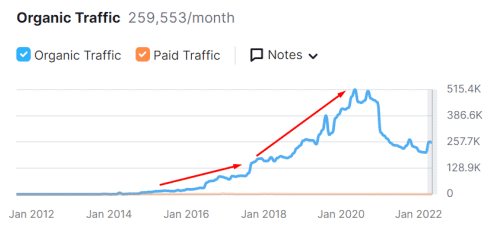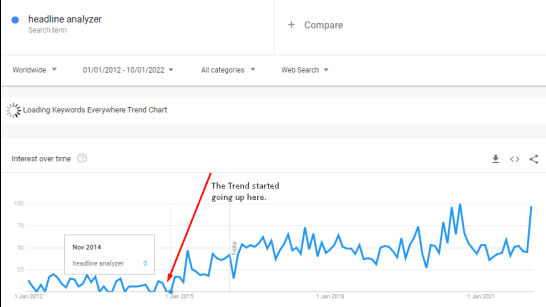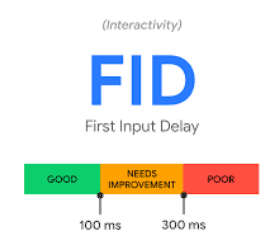Get a Customized Website SEO Audit and Online Marketing Strategy and Action
What are Heuristics
In the ever-evolving landscape of search engine optimization (SEO), strategies and techniques constantly undergo refinement to adapt to the dynamic algorithms of search engines like Google. Among the arsenal of SEO methodologies, heuristics and empirical evaluations stand out as powerful tools for uncovering untapped opportunities and crafting strategies based on data-driven insights. This comprehensive guide delves into the essence of heuristics and empirical evaluations in SEO, exploring their definitions, applications, examples, and differences from algorithmic SEO. By understanding these concepts, businesses can unlock new dimensions of growth and visibility in the digital realm.

WHAT ARE HEURISTICS
Heuristics, as a concept, embodies the art of using past experiences, knowledge, and data to make educated decisions and solve problems more efficiently. In the context of search engines, heuristics serve as guiding principles that empower users to navigate and discover information autonomously. Unlike rigid algorithms that dictate specific paths or outcomes, heuristics foster a sense of exploration and independence, allowing users to uncover insights and answers on their own terms.
Imagine a user embarking on a quest for information. Armed with heuristics, they possess a toolkit of strategies and insights gleaned from past encounters with similar quests. These heuristics may include recognizing patterns, understanding common pitfalls, and leveraging past successes to inform their current journey. Rather than relying solely on predefined routes or instructions, users can employ heuristic reasoning to adapt to new challenges and make nuanced decisions along the way.
In the realm of search engine optimization (SEO), heuristics play a crucial role in crafting strategies that resonate with users and search engines alike. By tapping into the collective wisdom of past experiences and data, SEO practitioners can anticipate user behaviors, identify emerging trends, and capitalize on untapped opportunities. Whether it’s crafting compelling content, optimizing website usability, or predicting future search trends, heuristics provide a flexible framework for navigating the ever-changing landscape of digital discovery.
In essence, heuristics empower users to become active participants in their search journey, guiding them towards meaningful discoveries and insights. By embracing the principles of heuristics, businesses can foster a user-centric approach to SEO, creating experiences that empower and engage audiences in their quest for knowledge and information.
Two Types Of Seo Strategies
In the realm of SEO strategies, two distinct approaches emerge: algorithmic SEO and heuristic SEO. While both share the common goal of enhancing a website’s visibility in search engine results pages (SERPs), they differ significantly in their methodologies and objectives.
Algorithmic SEO, as the name suggests, revolves around aligning with the algorithms of search engines, particularly Google, to secure higher rankings and outperform competitors in SERPs. This approach prioritizes adherence to established ranking factors and optimization techniques endorsed by search engine algorithms. By tailoring website content, structure, and technical aspects to meet the criteria set forth by algorithms, practitioners of algorithmic SEO aim to achieve consistent visibility and traffic from organic search results.
In contrast, heuristic SEO takes a more exploratory and proactive approach to search optimization. Rather than solely focusing on conforming to existing algorithms, heuristic SEO seeks to uncover untapped opportunities and insights through in-depth market research, understanding of customer behavior, and analysis of emerging trends. This approach acknowledges that search engine algorithms are not static entities but rather evolve over time in response to user behaviors and technological advancements.
One key aspect leveraged by heuristic SEO is the understanding that a significant portion of Google searches—approximately 15%—are unique or “absolute” to the search engine. These absolute searches represent queries that have never been made before, indicating a vast landscape of unexplored search intent and content opportunities. By harnessing the power of heuristic analysis, SEO practitioners can identify and capitalize on these untapped niches, crafting content and strategies tailored to emerging trends and user needs.
In essence, while algorithmic SEO focuses on playing by the rules set by search engine algorithms, heuristic SEO ventures into uncharted territory, guided by market insights, customer behavior data, and a keen eye for emerging opportunities. By embracing both approaches in tandem, businesses can achieve a comprehensive SEO strategy that balances conformity with innovation, ultimately driving sustainable growth and visibility in the competitive digital landscape.
In terms of search engines, it simply means enabling a user to discover or learn something for themselves.

There are two types of SEO Strategies
- Algorithmic SEO
Algorithmic SEO aims at satisfying Google Algorithm to outperform other websites in the SERP.
2. Heuristic SEO
Heuristic SEO aims at finding untapped oppurtunities in search based on sheer market research, customer behavior knowledge and analysis of emerging trends.
It leverages the fact that 15% of Google searches are absolute to the search engine.
Examples of Heuristics in an SEO Campaign
COSCHEDULE’S HEADLINE ANALYZER
Co-Schedule’s is a popular work management tool.

The headline analyzer tool of Co-Scheduler is famous and started picking up traffic in late 2015 and went on to gain a massive amount of traffic throughout 2016s and later.
Through the Way Back Machine we could find that the particular page started gathering traffic since 2014.

At the same time, if you search for the term headline analyzer, the topic started trending since November 2014.
This clearly indicates that there was no one was searching for this term, before 2014, yet still the company went ahead and made a tool for this, which started trending afterwards.

This is a classic example of Heuristic SEO. It does not depends upon keyword research or what Google trends tell people are searching for.
In this, we make content on topics we believe will trend in the coming years. This is based on pure knowledge of your niche, customer avatar, and intuition.
The potential from heuristic analysis forces us to satisfy the search engines and users and to be a thought leader in our niche.
Deploying Heuristics of Website Usability
Jacob Nielsen first established heuristics for website usability in 1990. He Laid down 10 guidelines that make a website more suitable for human use. We will discuss 8 of those guidelines and how to optimize for them.

Guideline 1: The User should always be aware of the changes in the system through feedback.
SEO Implementation: Ensure the First Input Delay metric has a value below 100ms for your website.
Also, ensure your website is responsive by manually checking all buttons and moving elements.
Guideline 2: The System should always speak the User’s Language.

SEO Implementation: Make sure your content readability is acceptable as per the industry standards.
Also, make your words clear and simple. Don’t use jargon or too many technical terms. Remember the
KISS Principle (Keep it Simple..Stupid)
Guideline 3: Users should have full navigational control as well as the ability to undo an action.
SEO Implementation: Implement a breadcrumb structure in the body for navigational ease.
Also, implementing an HTML Sitemap in the footer gives full navigational access to the website.
Guideline 4: Consistency and standards apply to both languages and actions and should be predictable
across the Internet.
SEO Implementation: Make sure the theme of the website, colour, button dimensions, and animations are consistent across all pages.
Guideline 5: Users are frustrated by errors. Therefore, you should design your site with the prevention of
errors in mind.
SEO Implementation: Keep a check on your Google Search Console. Make sure all indexing issues are fixed, especially 4xx and 5xx errors.
Check the Page Experience Reports for UI-UX issues. Keep Core Web Vitals optimised for optimal
performance.
Guideline 6: Create your pages with clearly visible instructions, actions, and objects.
SEO Implementation: Keep clear instructions for users in order to perform an action.
Ensure your online marketing funnel is optimized with proper paths, links and CTAs to avoid dropoffs.
Guideline 7: The Site should be usable for both novice and experienced users.
SEO Implementation: Simply follow the KISS Principle (Keep it Simple…Stupid.
Avoid using excess CSS and Javascript elements. Also avoid complex procedures for completing a single action. All of this will improve UX dramatically.
Guideline 8: Help users recognize, diagnose, and recover from errors.
SEO Implementation: Make sure to implement a custom “404 Page” for any unexpected errors.
Also make sure to implement error messages whenever applicable.
Difference between Algorithmic SEO and Heuristic SEO
Algorithmic SEO is focused on satisfying Google ranking factors and users. Hence it is biased on pre-existing notions.
Heuristic SEO depends on covering untapped potential which depends on market research and a bit of intuition. It is unbiased.
The outcome is realized both in the short term and long term. On the other hand, the outcome is realized in the long term in most cases.
Outcomes are mostly predictable. On the contrary, actions are based on intuition and empirical evaluation of customer data. Hence is the outcome is less predictable.
Competition in most cases is generally high since almost all website builders try to integrate SEO. Besides, Heuristics is all about finding untapped opportunities. Hence the competition is low.
What Are the Benefits of Heuristic SEO
Innovative Content Creation: Heuristic SEO encourages businesses to create innovative and relevant content that resonates with their target audience. By leveraging market research and understanding customer behavior, businesses can develop unique and engaging content that captures attention and drives organic traffic to their websites.
Agility and Adaptability: Heuristic SEO enables businesses to adapt quickly to changes in search engine algorithms and user behavior. Unlike rigid optimization techniques, heuristic SEO allows for flexibility and experimentation, empowering businesses to pivot their strategies in response to evolving trends and market dynamics.
Competitive Advantage: By uncovering untapped opportunities in search, heuristic SEO provides businesses with a competitive advantage over rivals who may rely solely on traditional SEO tactics. By staying ahead of the curve and anticipating emerging trends, businesses can differentiate themselves in the crowded digital marketplace and establish themselves as industry leaders.
Enhanced User Experience: Heuristic SEO emphasizes the importance of user experience (UX) in search optimization. By focusing on factors such as website usability, content readability, and navigational ease, businesses can create a seamless and enjoyable experience for visitors, leading to higher engagement, lower bounce rates, and ultimately, improved search rankings.
Long-term Sustainability: Heuristic SEO fosters a long-term approach to search optimization, focusing on building lasting relationships with audiences rather than chasing short-term gains. By consistently delivering valuable content and experiences, businesses can cultivate brand loyalty, earn trust, and establish themselves as authoritative voices in their respective industries, leading to sustained organic growth and visibility over time.
DIFFERENCE BETWEEN ALGORITHMIC SEO AND HEURISTIC SEO
Algorithmic SEO is focused on satisfying Google ranking factors and users. Hence it is biased on pre-existing notions.
Heuristic SEO depends on covering untapped potential which depends on market research and a bit of intuition. It is unbiased.
The outcome is realized both in the short term and long term. On the other hand, the outcome is realized in the long term in most cases.
Outcomes are mostly predictable. On the contrary, actions are based on intuition and empirical evaluation of customer data. Hence is the outcome is less predictable.
Competition in most cases is generally high since almost all website builders try to integrate SEO. Besides, Heuristics is all about finding untapped opportunities. Hence the competition is low.
To get more information on this visit the site of ThatWare today !

Thatware | Founder & CEO
Tuhin is recognized across the globe for his vision to revolutionize digital transformation industry with the help of cutting-edge technology. He won bronze for India at the Stevie Awards USA as well as winning the India Business Awards, India Technology Award, Top 100 influential tech leaders from Analytics Insights, Clutch Global Front runner in digital marketing, founder of the fastest growing company in Asia by The CEO Magazine and is a TEDx speaker and BrightonSEO speaker.


